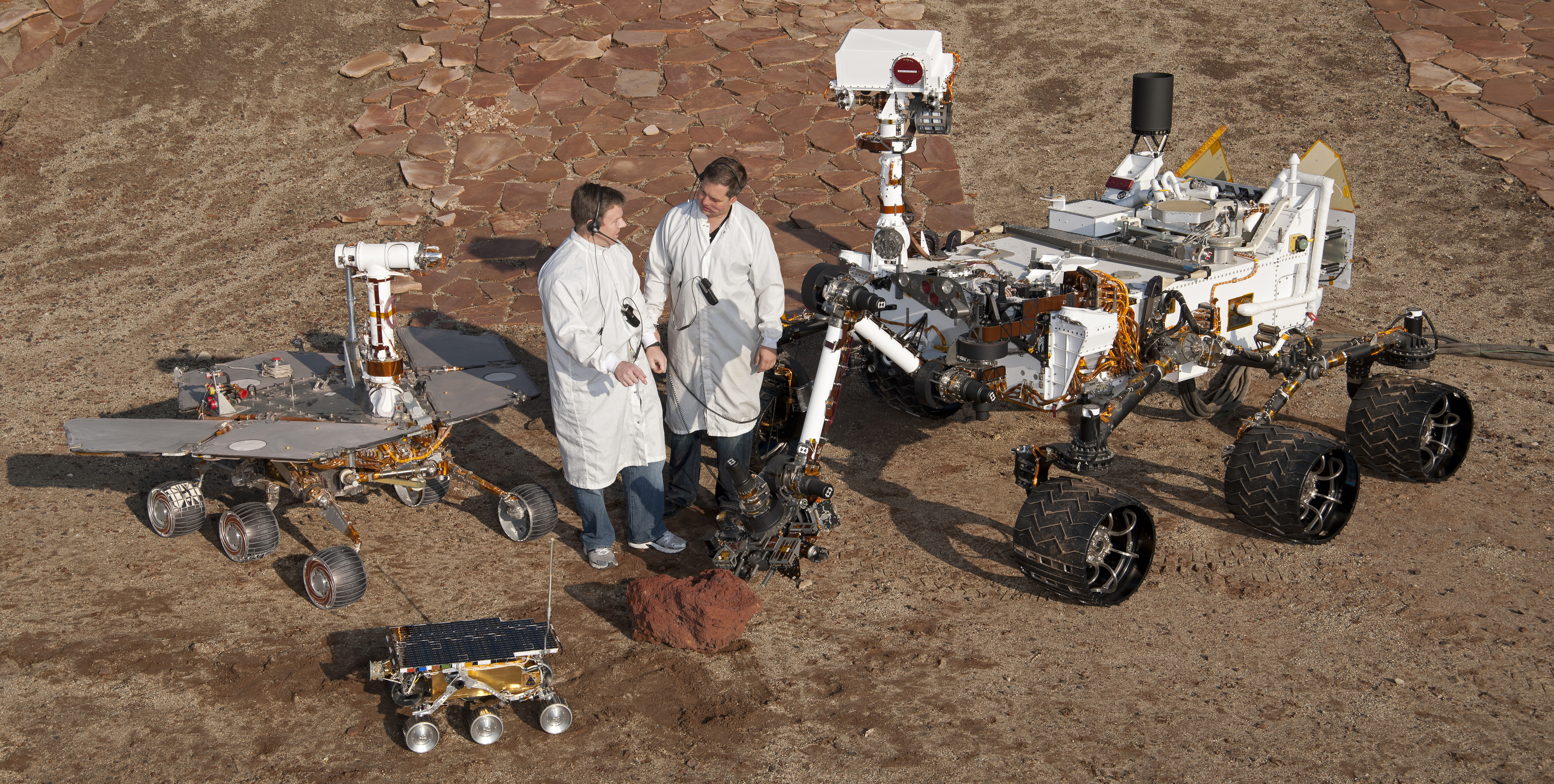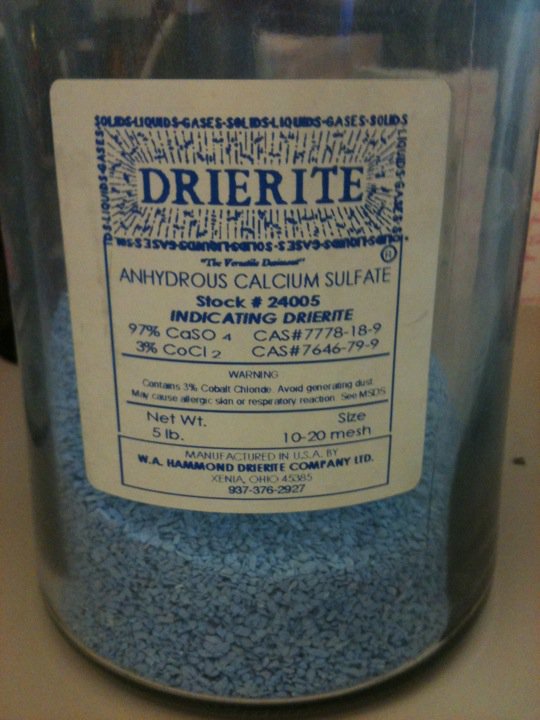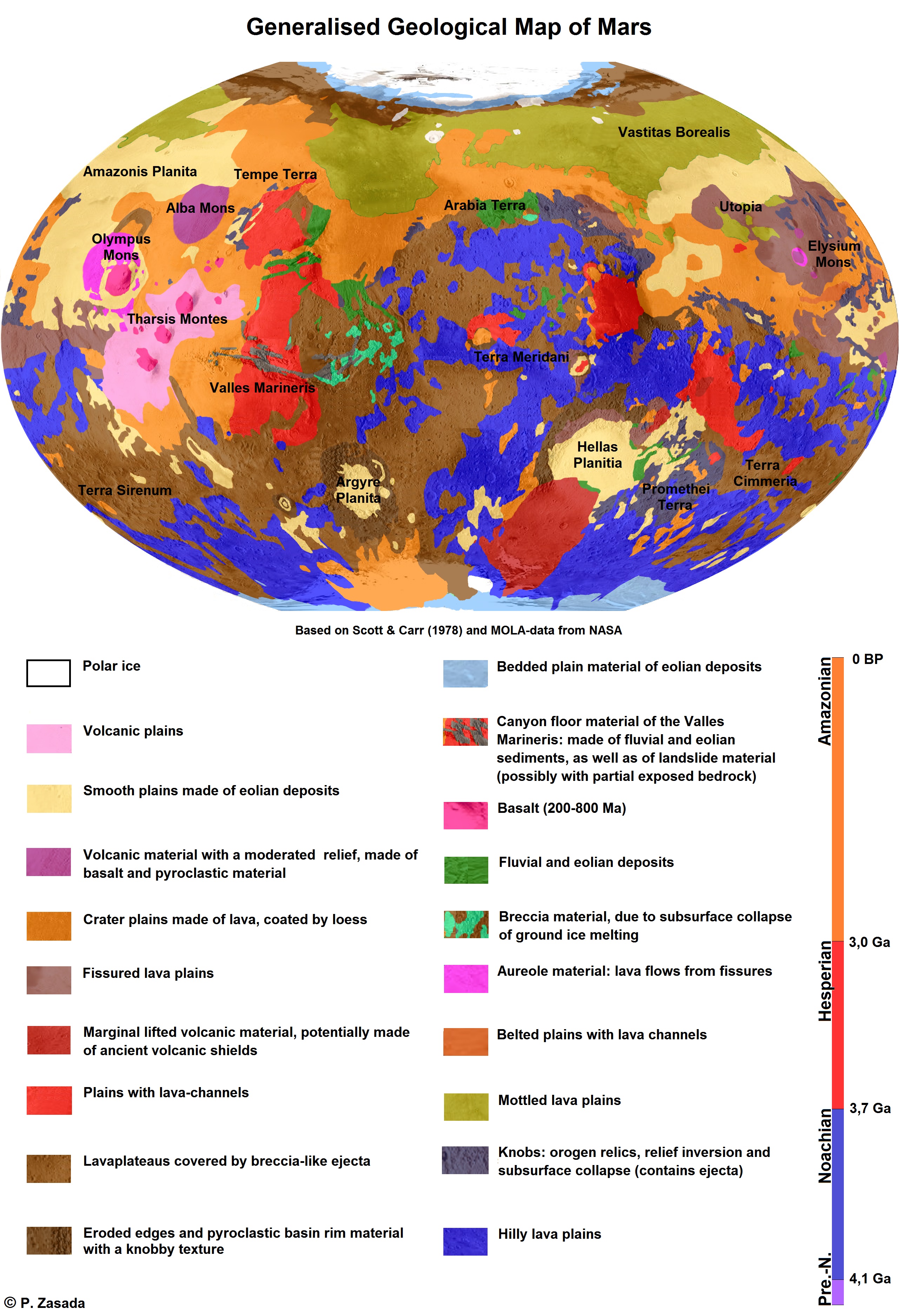|
Mud Cracks On Mars
In January 2017, scientists announced the possible discovery of mud cracks in Gale Crater on Mars. The Curiosity Rover imaged what may be the first mud cracks (desiccation cracks) ever found on Mars. They may have been formed from drying mud. The site, called “Old Soaker,” was within an exposure of Murray formation mudstone on lower Mount Sharp. It is hypothesized that these cracks formed more than 3 billion years ago and then were buried by more sediment. All this material eventually turned into rock. Later wind erosion removed the layers that covered the cracked layer. The cracks were filled with material which was resistant to later erosion. This erosion resistant material formed raised ridges, as some of the surrounding layer was removed. This is the first sighting of mud cracks. Previously, Curiosity has examined cracks and ridges of different shapes that were made by groundwater carrying minerals, such as calcium sulfate. Cracks for this process were caused by the press ... [...More Info...] [...Related Items...] OR: [Wikipedia] [Google] [Baidu] |
Mudcrack
Mudcracks (also known as mud cracks, desiccation cracks or cracked mud) are sedimentary structures formed as muddy sediment dries and contracts.Jackson, J.A., 1997, ''Glossary of Geology'' (4th ed.), American Geological Institute, Alexandria, VA, 769 p.Stow, D.A., 2005, ''Sedimentary Rocks in the Field'', Academic Press, London, 320 p. Crack formation also occurs in clay-bearing soils as a result of a reduction in water content. Formation of mudcrack Naturally forming mudcracks start as wet, muddy sediment dries up and contracts. A strain is developed because the top layer shrinks while the material below stays the same size. When this strain becomes large enough, channel cracks form in the dried-up surface to relieve the strain. Individual cracks spread and join up, forming a polygonal, interconnected network of forms called "tesselations." If the strain continues to build, the polygons start to curl upwards. This characteristic can be used in geology to understand the origi ... [...More Info...] [...Related Items...] OR: [Wikipedia] [Google] [Baidu] |
Gale (crater)
Gale is a crater, and probable dry lake, at in the northwestern part of the Aeolis quadrangle on Mars. It is in diameter and estimated to be about 3.5–3.8 billion years old. The crater was named after Walter Frederick Gale, an amateur astronomer from Sydney, Australia, who observed Mars in the late 19th century. Aeolis Mons, also known as Mount Sharp, is a mountain in the center of Gale and rises high. Aeolis Palus is the plain between the northern wall of Gale and the northern foothills of Aeolis Mons. Peace Vallis, a nearby outflow channel, 'flows' down from the hills to the Aeolis Palus below and seems to have been carved by flowing water. Several lines of evidence suggest that a lake existed inside Gale shortly after the formation of the crater. The NASA Mars rover ''Curiosity'', of the Mars Science Laboratory (MSL) mission, landed in "Yellowknife" ''Quad 51'' of Aeolis Palus in Gale at 05:32 UTC August 6, 2012. NASA named the landing location Bradbury Landi ... [...More Info...] [...Related Items...] OR: [Wikipedia] [Google] [Baidu] |
Mars
Mars is the fourth planet from the Sun. It is also known as the "Red Planet", because of its orange-red appearance. Mars is a desert-like rocky planet with a tenuous carbon dioxide () atmosphere. At the average surface level the atmospheric pressure is a few thousandths of Earth's, atmospheric temperature ranges from and cosmic radiation is high. Mars retains some water, in the ground as well as thinly in the atmosphere, forming cirrus clouds, frost, larger polar regions of permafrost and ice caps (with seasonal snow), but no liquid surface water. Its surface gravity is roughly a third of Earth's or double that of the Moon. It is half as wide as Earth or twice the Moon, with a diameter of , and has a surface area the size of all the dry land of Earth. Fine dust is prevalent across the surface and the atmosphere, being picked up and spread at the low Martian gravity even by the weak wind of the tenuous atmosphere. The terrain of Mars roughly follows a north-south ... [...More Info...] [...Related Items...] OR: [Wikipedia] [Google] [Baidu] |
Curiosity Rover
''Curiosity'' is a car-sized Mars rover Space exploration, exploring Gale (crater), Gale crater and Mount Sharp on Mars as part of NASA's Mars Science Laboratory (MSL) mission. ''Curiosity'' was launched from Cape Canaveral Space Force Station, Cape Canaveral (CCAFS) on November 26, 2011, at 15:02:00 Coordinated Universal Time, UTC and landed on Aeolis Palus inside Gale crater on Mars on August 6, 2012, 05:17:57 UTC. The Bradbury Landing site was less than from the center of the rover's touchdown target after a journey. Mission #Goals and objectives, goals include an investigation of the Martian climate of Mars, climate and geology of Mars, geology, an assessment of whether the selected field site inside Gale has ever offered environmental science, environmental conditions favorable for Life on Mars, microbial life (including investigation of the Water on Mars, role of water), and planetary habitability studies in preparation for Human mission to Mars, human exploration. In ... [...More Info...] [...Related Items...] OR: [Wikipedia] [Google] [Baidu] |
Mudstone
Mudstone, a type of mudrock, is a fine-grained sedimentary rock whose original constituents were clays or muds. Mudstone is distinguished from ''shale'' by its lack of fissility.Blatt, H., and R.J. Tracy, 1996, ''Petrology.'' New York, New York, W. H. Freeman, 2nd ed, 529 pp. The term ''mudstone'' is also used to describe carbonate rocks (limestone or dolomite) that are composed predominantly of carbonate mud. However, in most contexts, the term refers to siliciclastic mudstone, composed mostly of silicate minerals. The NASA Curiosity rover has found deposits of mudstone on Mars that contain organic substances such as propane, benzene and toluene. Definition There is not a single definition of mudstone that has gained general acceptance,Boggs 2006, p.143 though there is wide agreement that mudstones are fine-grained sedimentary rocks, composed mostly of silicate grains with a grain size less than . Individual grains this size are too small to be distinguished without a micros ... [...More Info...] [...Related Items...] OR: [Wikipedia] [Google] [Baidu] |
Mount Sharp
Mount Sharp, officially Aeolis Mons (), is a mountain on Mars. It forms the central peak within Gale crater and is located around , rising high from the valley floor. Its ID in the United States Geological Survey's Gazetteer of Planetary Nomenclature is 15000. On August 6, 2012, ''Curiosity'' (the Mars Science Laboratory rover) landed in "Yellowknife" ''Quad 51'' of Aeolis Palus, next to the mountain. NASA named the landing site Bradbury Landing on August 22, 2012. Aeolis Mons is a primary goal for scientific study. On June 5, 2013, NASA announced that ''Curiosity'' would begin an journey from the Glenelg area to the base of Aeolis Mons. On November 13, 2013, NASA announced that an entryway the rover would traverse on its way to Aeolis Mons was to be named "Murray Buttes", in honor of planetary scientist Bruce C. Murray (1931–2013). The trip was expected to take about a year and would include stops along the way to study the local terrain. On September 11, 2014, NASA ann ... [...More Info...] [...Related Items...] OR: [Wikipedia] [Google] [Baidu] |
Calcium Sulfate
Calcium sulfate (or calcium sulphate) is an inorganic salt with the chemical formula . It occurs in several hydrated forms; the anhydrous state (known as anhydrite) is a white crystalline solid often found in evaporite deposits. Its dihydrate form is the mineral gypsum, which may be dehydrated to produce bassanite, the hemihydrate state. Gypsum occurs in nature as crystals ( selenite) or fibrous masses ( satin spar), typically colorless to white, though impurities can impart other hues. All forms of calcium sulfate are sparingly soluble in waterFranz Wirsching "Calcium Sulfate" in Ullmann's Encyclopedia of Industrial Chemistry, 2012 Wiley-VCH, Weinheim. and cause permanent hardness when dissolved therein. Hydration states Calcium sulfate occurs at three levels of hydration with different crystallographic structures: anhydrous, dihydrate, and hemihydrate. The anhydrous ( anhydrite) crystallizes as an tightly-bound orthohombic lattice with space group Pnma, in which each ... [...More Info...] [...Related Items...] OR: [Wikipedia] [Google] [Baidu] |
Aeolis Quadrangle
The Aeolis quadrangle is one of a series of list of quadrangles on Mars, 30 quadrangle maps of Mars used by the United States Geological Survey (USGS) Astrogeology Research Program. The Aeolis quadrangle is also referred to as MC-23 (Mars Chart-23). The Aeolis quadrangle covers 180° to 225° W and 0° to 30° south on Mars, and contains parts of the regions Elysium Planitia and Terra Cimmeria. A small part of the Medusae Fossae Formation lies in this quadrangle. The name refers to the name of a floating western island of Aeolus, the ruler of the winds. In Homer's account, Odysseus received the west wind Zephyr here and kept it in bags, but the wind got out. It is famous as the site of two spacecraft landings: the Spirit (rover), ''Spirit'' rover landing site () in Gusev crater (January 4, 2004), and the Curiosity (rover), ''Curiosity'' rover in Gale Crater () (August 6, 2012). A large, ancient river valley, called Ma'adim Vallis, enters at the south rim of Gusev Crater, so Guse ... [...More Info...] [...Related Items...] OR: [Wikipedia] [Google] [Baidu] |
Geology Of Mars
The geology of Mars is the scientific study of the surface, crust, and interior of the planet Mars. It emphasizes the composition, structure, history, and physical processes that shape the planet. It is analogous to the field of terrestrial geology. In planetary science, the term ''geology'' is used in its broadest sense to mean the study of the solid parts of planets and moons. The term incorporates aspects of geophysics, geochemistry, mineralogy, geodesy, and cartography. A neologism, areology, from the Greek word ''Arēs'' (Mars), sometimes appears as a synonym for Mars's geology in the popular media and works of science fiction (e.g. Kim Stanley Robinson's Mars trilogy). The term areology is also used by the Areological Society. Geological map of Mars (2014) File:Geologic Map of Mars figure2.pdf, Figure 2 for the geologic map of Mars Composition of Mars Mars is a terrestrial planet, which has undergone the process of planetary differentiation. The ''InSight'' l ... [...More Info...] [...Related Items...] OR: [Wikipedia] [Google] [Baidu] |
Impact Crater
An impact crater is a depression (geology), depression in the surface of a solid astronomical body formed by the hypervelocity impact event, impact of a smaller object. In contrast to volcanic craters, which result from explosion or internal collapse, impact craters typically have raised rims and floors that are lower in elevation than the surrounding terrain. Impact craters are typically circular, though they can be elliptical in shape or even irregular due to events such as landslides. Impact craters range in size from microscopic craters seen on lunar rocks returned by the Apollo Program to simple bowl-shaped depressions and vast, complex, multi-ringed impact basins. Meteor Crater is a well-known example of a small impact crater on Earth. Impact craters are the dominant geographic features on many solid Solar System objects including the Moon, Mercury (planet), Mercury, Callisto (moon), Callisto, Ganymede (moon), Ganymede, and most small moons and asteroids. On other planet ... [...More Info...] [...Related Items...] OR: [Wikipedia] [Google] [Baidu] |
Water On Mars
Although very small amounts of liquid water may occur transiently on the surface of Mars, limited to traces of dissolved moisture from the atmosphere and thin films, large quantities of ice are present on and under the surface. Small amounts of water vapor are present in the atmosphere, and liquid water may be present under the surface. In addition, a large quantity of liquid water was likely present on the surface in the distant past. Currently, ice is mostly present in polar permafrost. More than 5 million km3 of ice have been detected at or near the surface of Mars, enough to cover the planet to a depth of . Even more ice might be locked away in the deep subsurface.Carr, 2006, p. 173. The chemical signature of water vapor on Mars was first unequivocally demonstrated in 1963 by spectroscopy using an Earth-based telescope. In 2008 and 2013, ice was detected in soil samples taken by the Phoenix lander and ''Curiosity'' rover. In 2018, radar findings suggested the pre ... [...More Info...] [...Related Items...] OR: [Wikipedia] [Google] [Baidu] |









